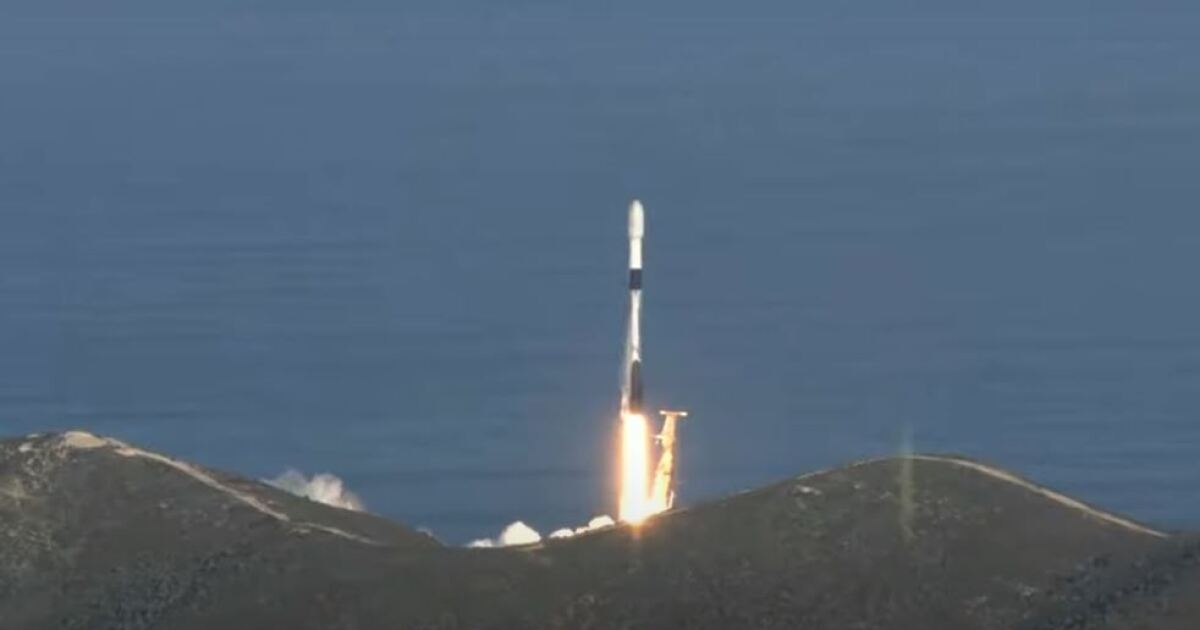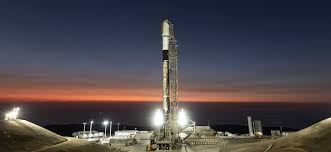SpaceX has once again made headlines with a successful launch of its Starlink Version 2 Mini satellites into a polar orbit from Vandenberg Space Force Base in California. This mission, known as Starlink 17-3, saw the addition of 24 satellites to SpaceX's megaconstellation, which now boasts more than 7,900 satellites in orbit. The Falcon 9 rocket carrying the payload lifted off at 8:52 p.m. PDT to embark on this rare launch shortly after sunset.
The reusable Falcon 9 first stage booster, designated as B1082, was making its 14th trip to space on this mission. Having been utilized in previous missions such as NROL-145, USSF-62, and OneWeb #20, the booster successfully landed back on the droneship 'Of Course I Still Love You' approximately eight minutes after liftoff. This marked the 141st booster landing on the droneship and the 477th booster landing overall for SpaceX.
In a recent update on its Starlink website, SpaceX revealed plans to significantly enhance its connectivity in polar regions like Alaska by deploying hundreds of additional satellites into polar orbit. By the end of 2025, the company aims to launch more than 400 satellites into a polar inclination, which is expected to more than double the capacity for users in Alaska and other high latitude locations. The deployment of these extra satellites has already begun, resulting in a significant boost in download speeds for Alaskan customers.
This undertaking aligns with SpaceX's Starlink 17-1 mission on May 27, where a similar deployment of 24 Starlink V2 Mini satellites was initiated, showcasing the company's commitment to expanding its satellite network. With plans to launch over 400 satellites into polar orbit by the year's end, SpaceX is poised to focus the majority of its upcoming West Coast launches on this strategic initiative, requiring more than 16 launches with at least 24 satellites each.
Looking ahead, SpaceX will shift its focus to a rideshare mission for NASA, featuring the agency's TRACERS cTandem Reconnection and Cusp Electrodynamics Reconnaissance Satellitesc payload. This mission aims to study magnetic explosions in space and is set to be a pivotal moment in human spaceflight, marking the first mission of its kind to a polar orbit. Scheduled for liftoff on Monday, March 31, at 9:46 p.m. EDT, TRACERS will play a vital role in capturing and analyzing the interactions between the Sun's magnetic field and Earth's.
With the recent surge in SpaceX launches from Southern California, enthusiasts have been provided with numerous opportunities to witness the awe-inspiring sight of rockets gracing the skies. The successful deployment of Starlink internet satellites further solidifies SpaceX's position as a pioneering force in the space industry. As Elon Musk's brainchild continues to push boundaries and revolutionize space travel, the future holds exciting prospects for SpaceX and its ambitious endeavors.


